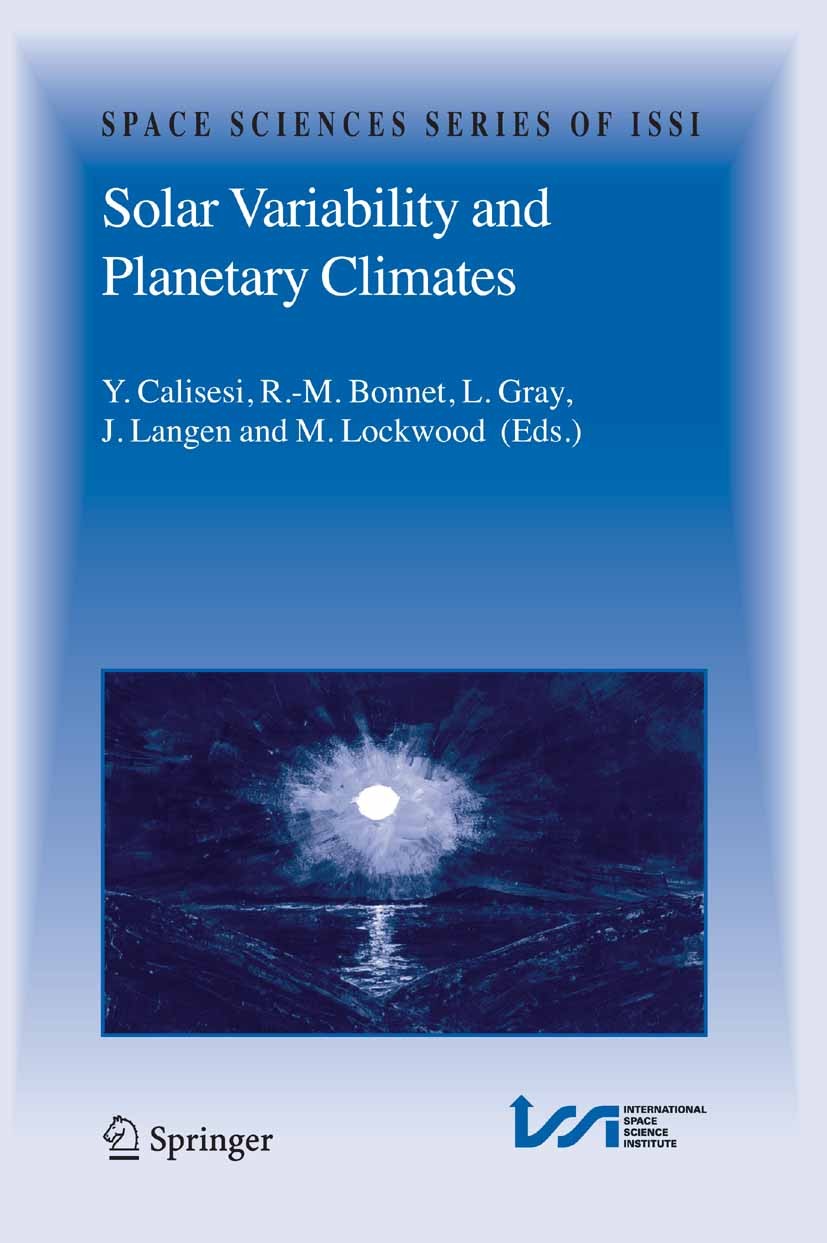| 书目名称 | Solar Variability and Planetary Climates | | 编辑 | Y. Calisesi,R. -M. Bonnet,M. Lockwood | | 视频video | http://file.papertrans.cn/872/871452/871452.mp4 | | 概述 | Understanding the causes and effects of climate change is probably one of the most crucial scientific challenges of our time. This book provides an updated overview of the processes determining the in | | 丛书名称 | Space Sciences Series of ISSI | | 图书封面 |  | | 描述 | 2 With a global average irradiance of 342 W/m , the Sun is by far the largest source of energy for planet Earth. In comparison, the internal energy produced by Earth 2 itself is only about 0. 087 W/m (Pollack et al. , 1993), which in turn is 3. 5 times 2 larger than the 0. 025 W/m of heat produced by the burning of fossil fuels. About 31% (31 units) of the solar energy which arrives at the top of the - mosphere is re?ected back to space by scattering from clouds, aerosols, and the Earth’s surface. Almost 20 units of solar radiation are absorbed in the atmosphere. The remaining 49 units are absorbed at the surface. Evaporation of water at the Earth’s surface consumes 23 units, and 7 units are transferred to the atmosphere by heat conduction. On balance 19 units are lost from the Earth’s surface as infrared radiation, however consisting of 114 going upward and 95 returning from the - mosphere to the Earth’s surface (see also Rosenfeld, 2006). There is thus a sixfold recycling of energy. This is the greenhouse effect, established by the presence of watervaporandofothergreenhousegases,CO ,CH ,N O,andCFCs,intheatmo- 2 4 2 sphere. Due to human activities the latter have been increasing i | | 出版日期 | Book 2007 | | 关键词 | Aerosol; Atmospheric Response; Cloud; Orbit; Planet; Smog; Solar Variability; Solar variation; Solar-Terrest | | 版次 | 1 | | doi | https://doi.org/10.1007/978-0-387-48341-2 | | isbn_softcover | 978-1-4419-2371-4 | | isbn_ebook | 978-0-387-48341-2Series ISSN 1385-7525 | | issn_series | 1385-7525 | | copyright | Springer-Verlag New York 2007 |
The information of publication is updating

|
|
 |Archiver|手机版|小黑屋|
派博传思国际
( 京公网安备110108008328)
GMT+8, 2025-12-17 20:43
|Archiver|手机版|小黑屋|
派博传思国际
( 京公网安备110108008328)
GMT+8, 2025-12-17 20:43


